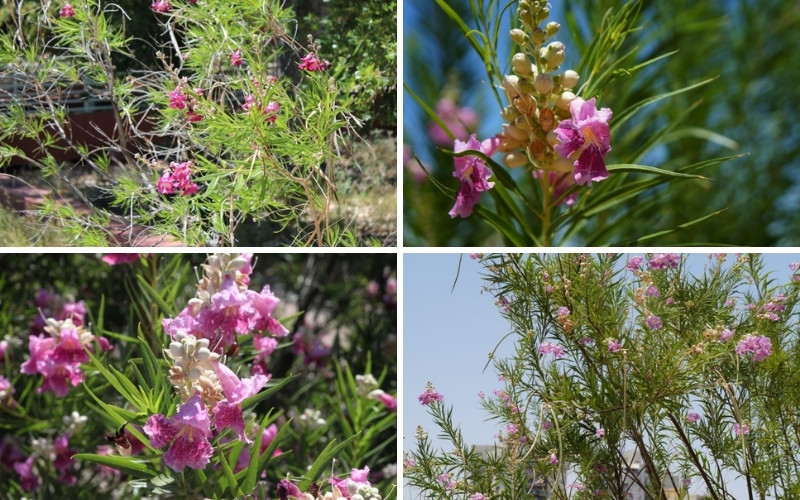
Similar to the commonly known Weeping Willow, the Desert Willow–or Chilopsis linearis — is a shrub plant with drooping limbs and delicate blossoms. However, it’s a member of the Trumpet-Creeper plant family, Bignoniaceae, otherwise known as Bignonias. The plant is just one of 800 species in the family but shares the same trumpet floweret characteristic.
The plant gets its name for its enduring spirit in harsh climates. The Desert Blossom can withstand the dry heat in California, Texas, Arizona, and New Mexico, where it is most commonly found, and freezing temperatures of 15-degrees Fahrenheit.
When it blooms during late Spring to early Autumn, pale pink, white or violet flowers blossom with a fragrant scent and sweet nectar that attracts both butterflies and hummingbirds.
Despite its durability, the Desert Willow can benefit and flourish with some informative care tips.
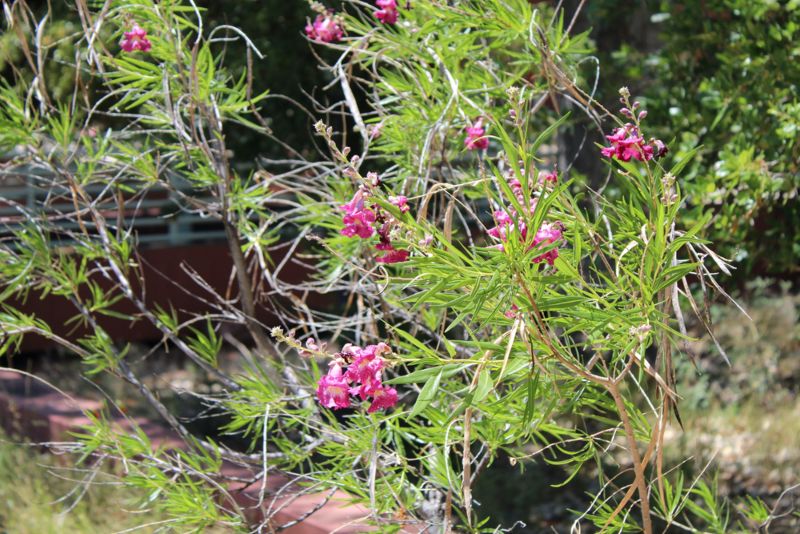
| Botanical Name: | Chilopsis linearis |
| Common Name(s): | Desert Willow, Flor De Mimbre |
| Plant Type: | Shrub |
| Mature Size: | 10 – 30 ft |
| Sun Exposure: | Full sun |
| Water Needs: | Low |
| Soil Type: | limestone, sandy or decomposed granite |
| Soil pH: | 6.0-9.0 |
| Bloom Time: | Spring, Summer, and early Autumn |
| Maintenance: | Low |
| Flower Color: | Pink, white, or tints of purple |
| Hardiness Zones: | 5b-9 |
| Toxicity: | Non-toxic |
Desert Willow Care
The Desert Willow is a reasonably hands-off plant when it comes down to care basics. It does not require too much water, loves the sun, and only needs tending to in the off-season. However, to ensure your Desert Willow receives the best care to thrive and survive in harsh climates, it would be best to understand the care fundamentals more in-depth.
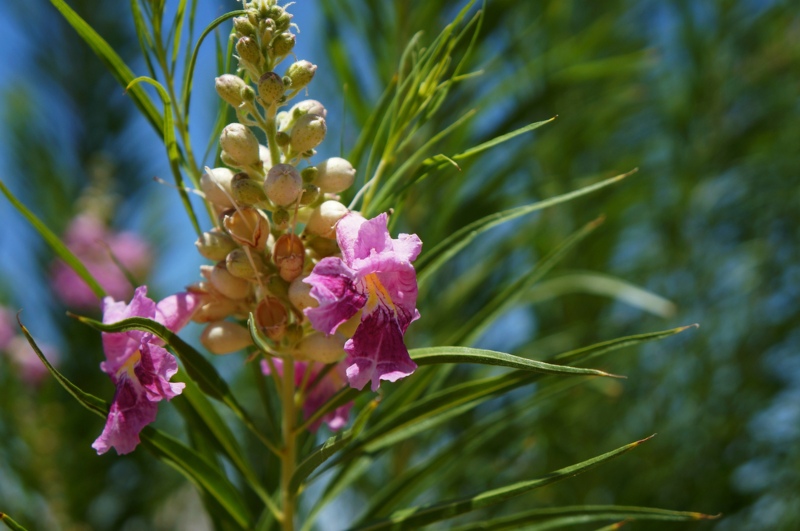
Light
The Desert Will needs lots of sun to grow and flourish. Therefore, it’s best to plant the seedling in an area of your yard or desired landscape that gets full sun for at least a majority of the day. The plant’s love of dry heat climates lends to its favoritism of full sunlight.
Water
As the name implies, the Desert Willow often thrives in dry heat climates within the Western United States. As such, it does not rely on frequent watering to stay nourished. Instead, the Desert Willow can endure long stretches without any water at all.
You can water it a little bit every now and then, but since the plant is not used to rain, it might be best to hold off unless you can see that it visibly needs a drink. Before you water the plant again, let the soil dry completely to encourage more abundant blooms later in the season.
You can also avoid remembering when to water the Desert Willow if you plant it near some naturally occurring water source because it can survive off of the subsurface water for the most part.
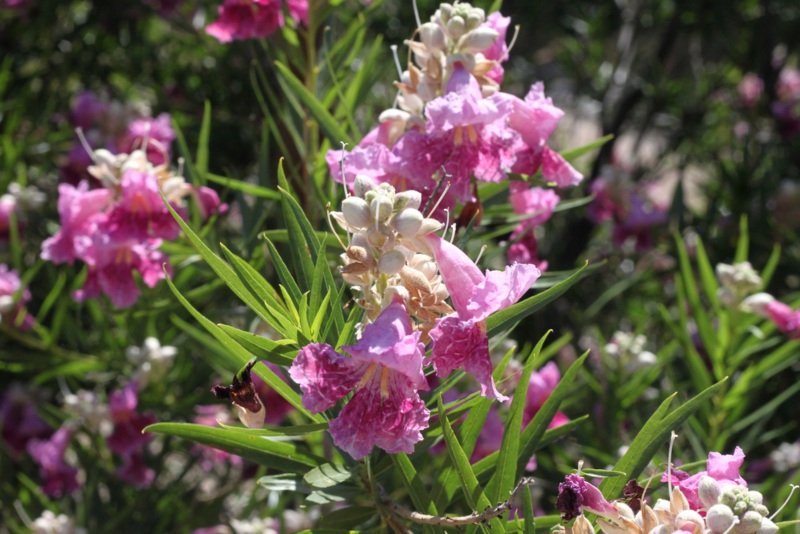
Temperature and Humidity
The Desert Willow is native to dry climates because it doesn’t need tons of water to survive. However, the shrub can also grow in humid climates, such as Northern Florida. Planting the shrub in a humid environment won’t hurt the plant so long as the area does not receive heavy rainfall.
In areas with frequent rain, the Desert Willow can succumb to overwatering and drown in the overly saturated soil. For this reason, the Desert Willow does best in dry climates, either hot or cold.
Soil
Again, since the Desert Willow is native to Western areas in the United States with dry climates, the plant does not need wet, organic-rich soil to grow. Instead, the plant prefers sandy soil, limestone, or decomposed granite.
However, you might want to keep the soil damp to give the plant some moisture. The plant also does well in wooded areas near bodies of water, such as creeks, streams, riverbanks, washes, or ditches where it can acquire water as it pleases.
Deadheading and Pruning
Since Desert Willows can reach upwards of 20-feet, you might want to trim it back from time to time. However, you won’t want to prune the plant until late winter or early spring, before the bloom time. You can trim the plant however you see fit, but you should complete all cuts at a 45-degree angle and begin with the lower branches rather than the canopy to maintain the willow-like shape.
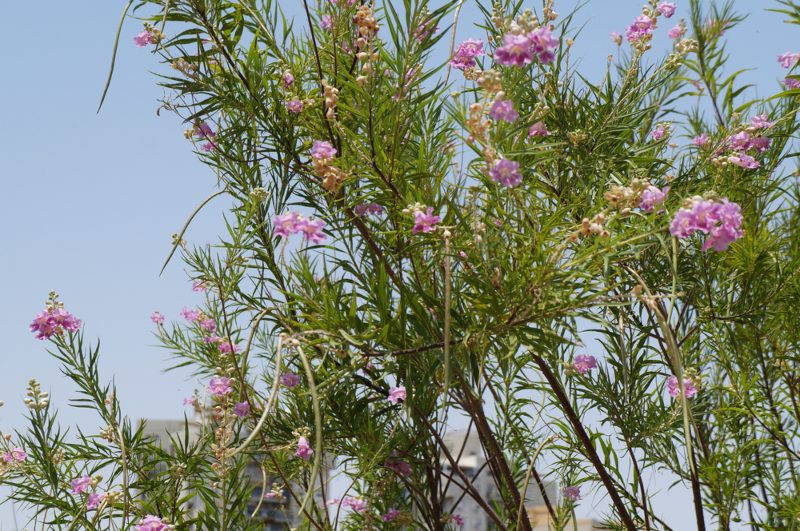
Propagation
If you love your Desert Willow and want more to add color to your landscape, you can easily propagate the plant either via cutting or sowing seeds. If you choose to cut the Desert Willow, you only need to root the pieces in well-drained soil.
However, if you choose to use the plant’s seeds to begin anew, you might want to plant the seeds individually in pots in a warm area. Keep the seeds in the pots until the next blooming season. Then, you can transplant them into your garden area to grow.




